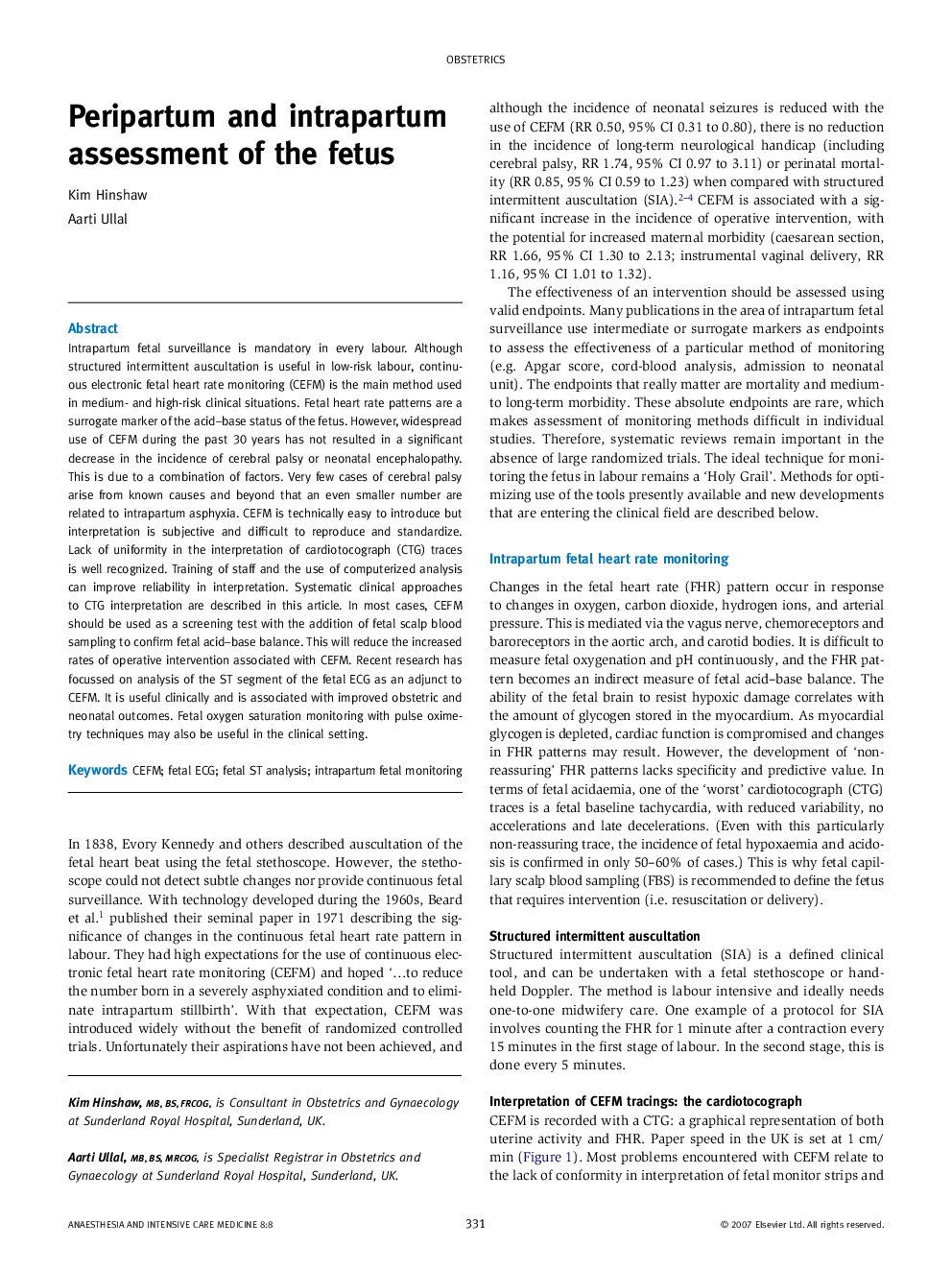| Article ID | Journal | Published Year | Pages | File Type |
|---|---|---|---|---|
| 2743643 | Anaesthesia & Intensive Care Medicine | 2007 | 6 Pages |
Abstract
Intrapartum fetal surveillance is mandatory in every labour. Although structured intermittent auscultation is useful in low-risk labour, continuous electronic fetal heart rate monitoring (CEFM) is the main method used in medium- and high-risk clinical situations. Fetal heart rate patterns are a surrogate marker of the acid-base status of the fetus. However, widespread use of CEFM during the past 30 years has not resulted in a significant decrease in the incidence of cerebral palsy or neonatal encephalopathy. This is due to a combination of factors. Very few cases of cerebral palsy arise from known causes and beyond that an even smaller number are related to intrapartum asphyxia. CEFM is technically easy to introduce but interpretation is subjective and difficult to reproduce and standardize. Lack of uniformity in the interpretation of cardiotocograph (CTG) traces is well recognized. Training of staff and the use of computerized analysis can improve reliability in interpretation. Systematic clinical approaches to CTG interpretation are described in this article. In most cases, CEFM should be used as a screening test with the addition of fetal scalp blood sampling to confirm fetal acid-base balance. This will reduce the increased rates of operative intervention associated with CEFM. Recent research has focussed on analysis of the ST segment of the fetal ECG as an adjunct to CEFM. It is useful clinically and is associated with improved obstetric and neonatal outcomes. Fetal oxygen saturation monitoring with pulse oximetry techniques may also be useful in the clinical setting.
Related Topics
Health Sciences
Medicine and Dentistry
Anesthesiology and Pain Medicine
Authors
Kim Hinshaw, Aarti Ullal,
